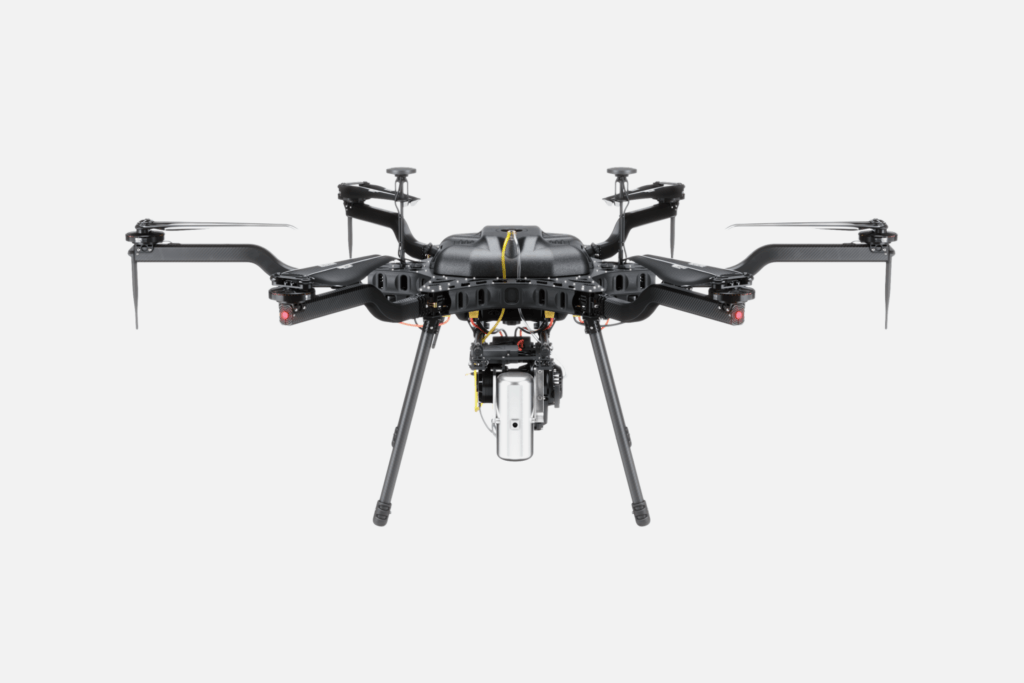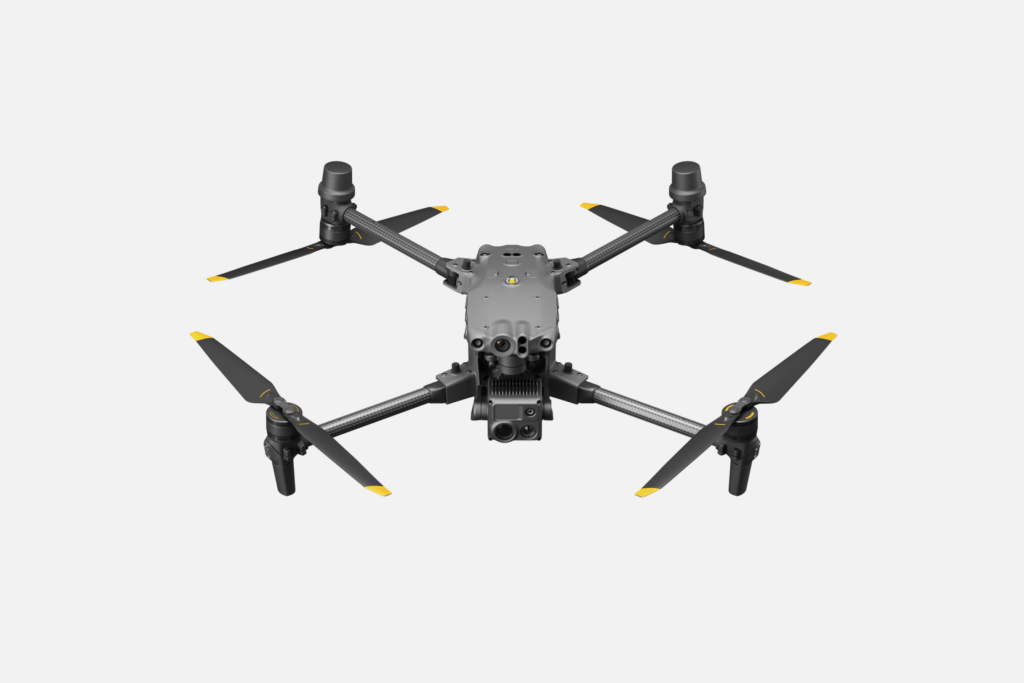1.
6 Best Drones for Bridge Inspection
1.1.
Voliro
1.2.
Skydio X10
1.3.
Carrier H6 Electric
1.4.
DJI Matrice 30
1.5.
Skyfish M4 Drone
1.6.
Draganflyer Commander2
2.
Drone Bridge Inspections: Better Data with Fewer Overheads

1.
6 Best Drones for Bridge Inspection
1.1.
Voliro
1.2.
Skydio X10
1.3.
Carrier H6 Electric
1.4.
DJI Matrice 30
1.5.
Skyfish M4 Drone
1.6.
Draganflyer Commander2
2.
Drone Bridge Inspections: Better Data with Fewer Overheads
Bridges are critical transportation arteries, supporting economic activity and community integration. But because of the heavy use, bridges also require frequent and resource-intensive repairs.
In the US, 1 in 3 bridges need repair or replacement. In the UK — over 3,200 are in a pitiful state. With so many aging bridges, transportation departments seek resource optimization — and drones offer exactly that.
Bridge inspection drones empower maintenance teams to collect more asset data quickly. Drones can get into areas inaccessible to bucket trucks or rope climbers without lane closures. The best bridge inspection drones also enable advanced photogrammetry shoots, early corrosion detection, and thickness measurements at heights.
Enterprise drones come with a host of advanced features for asset inspection scenarios: HD RGB and thermal cameras, mountable ultrasound and dry film thickness measurement probes, LiDAR system, and autonomous photogrammetry data capture modes.
When evaluating drones, we prioritized models with high flight stability (strong altitude and position hold, high wind resistance), agile maneuvering, long battery life, and a good range of payloads.
Here’s our list of the top six drones for bridge inspection:

Voliro enables vertical infrastructure inspections thanks to its unique 6-degree-of-freedom navigation system. By using a combination of thrust controls and sensing systems for advanced maneuverability, Voliro can safely approach structures from any angle and perform contact-based integrations.
The navigation system includes a VGA depth camera, two six-packs of LiDAR distance and vision-based velocity sensors, and RTK GPS for extra positioning accuracy. Whereas Voliro can also navigate in GPS-denied environments. The drone also includes a 4K 12 MP inspector camera with a frame rate of 30/60 fps.
These capabilities expand drone bridge inspections beyond visual inspections. With Voliro drones, teams can perform non-destructive testing (NDT) at heights.
All probes are easily interchangeable and available with one subscription, which also includes access to upcoming releases like our pulsed eddy current probe. An open payload architecture accommodates custom integrations.
Main Features

Skydio X10 has solid creds as a bridge inspection drone. It’s used by 35 of 50 state transportation agencies in the US and for some good reasons.
Skydio offers high-resolution visual and radiometric cameras in a modular sensor package for visual inspections. It can detect centimeter-level cracks on concrete bridge structures even in low-light conditions. Using the 3D scan feature, bridge inspection crews can program fully autonomous photogrammetry missions to collect photo, video, and thermal data (plus metadata) in less time. On-site, they can create 2D/3D models to verify data accuracy and schedule re-flights if needed.
Advanced autonomy helps novice pilots complete missions faster. Skydio X10 has six 360-degree navigation cameras and an onboard spatial AI Engine that provides complete environmental awareness and robust obstacle detection even without GPS.
The nighttime view system is another strong point as it allows scheduling bridge inspections outside of peak traffic hours. The onboard AI assistant, trained on decades of flight data, provides extra guidance to the pilot in poor lighting conditions or can be programmed to execute repeat missions autonomously at night.
Main Features

If long flight time is crucial, the Carrier H6 Hybrid EFI from Harris Aerial is a solid contender. It can stay in the air for up to 4 hours, thanks to an Electronic Fuel Injection (EFI) generator, which offers great fuel efficiency. It also dynamically adapts to weather conditions for optimal performance. Plus, you can convert it into an all-electric drone or a hydrogen-electric version thanks to its flexible airframe design. The design also makes it easily foldable to 45% of its flight-ready size for transportation.
The drone is great for bridge inspection missions due to extra safety features: real-time engine temperature monitoring, engine RPM feedback, and throttle percentage monitoring. It also has radio connectivity monitoring and 5-minute backup battery redundancy to protect against power issues.
A modular payload bay with 2-AXIS payload and gimbal controls allows mounting various third-party payloads (up to 5 kg max). Harris Aerial upsells LiDAR systems from Phoenix Sensors and mapping tools from GeoCue. The selection of mountable camera gear is also impressive: RGB, EO/IR, hyperspectral, and multispectral. The payload bay accommodates release scenarios for dropping tools to ground maintenance crews, placing marketers, or static sensors at heights. The drone delivers with centimeter-level precision. Overall, Carrier H6 Hybrid EFI offers great versatility for a variety of bridge drone inspection scenarios
Main Features

The DJI Matrice 30 is arguably the best enterprise drone in terms of portability, folding to just 365×215×195 mm. But size doesn’t hinder its performance characteristics: a flight time of 40 minutes, max horizontal speed of 23 m/s, and wind resistance of 12 m/s. The model also boasts IP55 weather resistance and an operational temperature range of -35℃ to 50℃. Built-in advanced redundancy systems, featuring dual IMU, compass, barometer, and RTK antennas, also lend greater peace of mind to the operators.
Onboard visual gear includes wide, zoom, and thermal cameras with a laser rangefinder. The zoom camera features a 48 MP 1/2” CMOS Sensor with 16X optical zoom for close-ups. Smart low-light mode captures sharp visuals in poor lighting, while the laser rangefinder detects objects and immediately transmits coordinates. Other payloads can be integrated using a Payload SDK.
An upgraded Live Mission Recording feature on the flight controller improves operating efficiency. You can target specific point markings with 90% fewer steps. Adjustable gimbal angle and photo settings between Waypoints improve flight efficiency. And if you need to further fine-tune flight control features, DJI provides an open-source mobile SDK.
Main Features

M4 Drone from Skyfish is a bridge drone with the most customization opportunities. Skyfish is open to adapting both its hardware and software to the client’s requirements, plus provides access to its technology for in-house tinkering.
You can use the custom sensor API to integrate various drone payloads like camera systems, LiDAR scanners, environmental sensors, or measurement gauges. According to Skywish, “anything with a serial port, USB, I2C, pulse-width modulation (PWM), and an API” can be added to this drone and controlled with Skymind, a machine learning-ready onboard computer. Apart from implementing payload controls, Skymind also allows adding extra flight capabilities like BVLOS operations or autonomous navigation.
Another definitive advantage is ultra-fast speed. M4 drone can roam at up to 65 mph/104 km/h — great for inspecting long floating or viaduct bridges over open water. The encrypted video and telemetry transmission stays crisp at the 5ml/8 km range, extendable with a base station. Like the Carrier H6, M4 is compatible with various options and is RTK-ready with redundant flush-mounted antennas.
Main Features

Commander2 by Draganflyer is another multi-mission inspection drone with easily interchangeable payloads and other opportunities for custom fitting. The company produces its own payloads and offers integrations with MicaSense, FLIR, Sony, and Corning. The options include HD RGB and zoom cameras, thermal and hyperspectral sensors, and other goodies. The max payload capacity is 2.2 lbs/1 kg. All technology is US-sourced, including flight controllers, radios, and communication devices.
Powered by MAVLink-based flight planning software Commander2 supports a range of automated flight modes including grind and 90-degree double grind, corridor mapping, and waypoint flights. Manual controls also provide a great grip over drone maneuverability and stability. Users also enjoy automated payload target tracking for both static and moving objects (with supported options).
For bridge photogrammetry modeling scenarios, Commander2 can be equipped with a PPK/RTK module for extra positioning accuracy. Draganfly also built a Long Range LiDAR system with a scanning range of 2460 ft/750 meters and global accuracy of 2 cm — a great option if you want to cover greater areas in one mission or avoid close approaches to bridge structures.
Main Features
Industrial inspection drones help transportation agencies improve maintenance schedules for aging infrastructure at a lean cost. The use of drones doesn’t just facilitate access to previously inaccessible areas but also reduces the number of lane closures, specialized equipment commissioning, and human personnel presence in potentially dangerous areas.And new tools like online video makers make it easier than ever now to edit your footage into finished outputs for clients.
With safer and more frequent visual inspections and NDT tests, your teams can identify degradation at the onset and address it with early intervention. Moreover, with ample historical inspection data, you can better understand the impacts of various design decisions, material choices, and environmental factors on the bridge behavior.